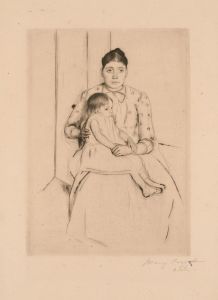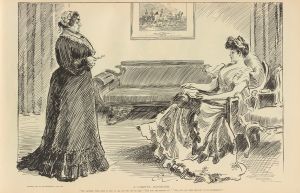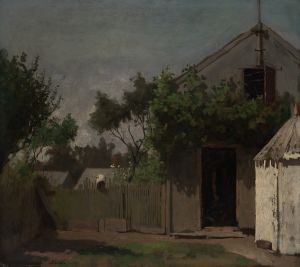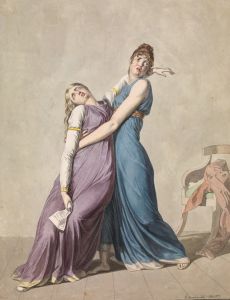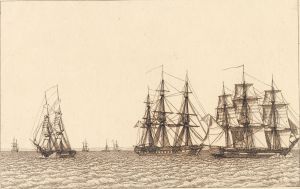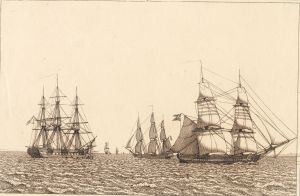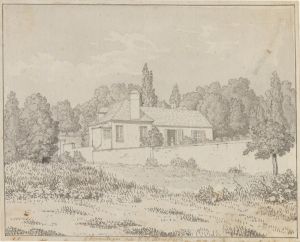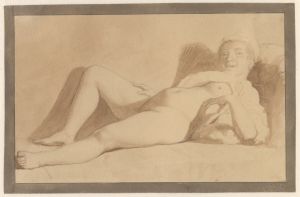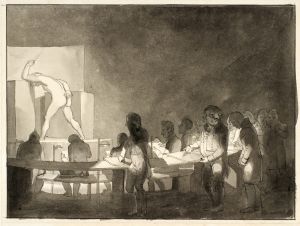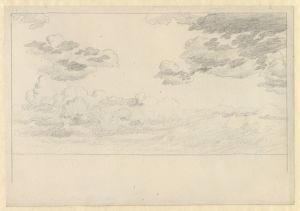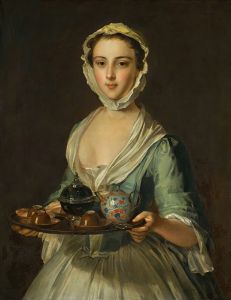
To tjenestepiger i regnvejr
A hand-painted replica of Christoffer Wilhelm Eckersberg’s masterpiece To tjenestepiger i regnvejr, meticulously crafted by professional artists to capture the true essence of the original. Each piece is created with museum-quality canvas and rare mineral pigments, carefully painted by experienced artists with delicate brushstrokes and rich, layered colors to perfectly recreate the texture of the original artwork. Unlike machine-printed reproductions, this hand-painted version brings the painting to life, infused with the artist’s emotions and skill in every stroke. Whether for personal collection or home decoration, it instantly elevates the artistic atmosphere of any space.
Christoffer Wilhelm Eckersberg, often referred to as the "father of Danish painting," was a prominent figure in the Danish Golden Age of painting. His work, "To tjenestepiger i regnvejr" (translated as "Two Servant Girls in the Rain"), is a testament to his skill in capturing everyday life with a sense of realism and attention to detail.
Eckersberg was born in 1783 in Blåkrog, Denmark, and he studied at the Royal Danish Academy of Fine Arts in Copenhagen. He later traveled to Paris and Rome, where he was influenced by the neoclassical style and the works of Jacques-Louis David. Upon returning to Denmark, Eckersberg became a professor at the Royal Danish Academy and played a crucial role in shaping the next generation of Danish artists.
"To tjenestepiger i regnvejr" is one of Eckersberg's lesser-known works, yet it exemplifies his ability to depict ordinary scenes with a sense of immediacy and authenticity. The painting portrays two young servant girls caught in a rain shower, a subject that might seem mundane but is rendered with a keen eye for detail and a deep understanding of human emotion. The girls are shown huddled together, sharing an umbrella, as they navigate the wet streets. Their clothing, expressions, and the overall atmosphere of the scene are captured with precision, reflecting Eckersberg's commitment to realism.
The painting is notable for its composition and use of light. Eckersberg was known for his meticulous approach to perspective and his ability to create a sense of depth in his works. In "To tjenestepiger i regnvejr," he uses the play of light and shadow to enhance the mood of the scene, highlighting the contrast between the dark, rain-soaked environment and the bright, hopeful expressions of the girls. This use of light not only adds to the realism of the painting but also imbues it with a sense of warmth and humanity.
Eckersberg's attention to detail is evident in the textures of the girls' clothing and the wet cobblestones, which are rendered with a level of precision that invites the viewer to appreciate the subtleties of the scene. This focus on detail is a hallmark of Eckersberg's style and reflects his belief in the importance of observing and accurately depicting the world around him.
While "To tjenestepiger i regnvejr" may not be as widely recognized as some of Eckersberg's other works, it remains an important example of his contribution to Danish art. The painting captures a fleeting moment in time, offering a glimpse into the lives of ordinary people and the challenges they faced. It is a reminder of Eckersberg's ability to find beauty and significance in the everyday, a quality that has earned him a lasting place in the history of art.
Eckersberg's influence extended beyond his own work, as he mentored many artists who would go on to define the Danish Golden Age. His emphasis on realism, perspective, and the study of light and shadow became foundational principles for his students, shaping the direction of Danish art for years to come.
In summary, "To tjenestepiger i regnvejr" is a fine example of Christoffer Wilhelm Eckersberg's skill as a painter and his ability to capture the essence of everyday life. Through his meticulous attention to detail and masterful use of light, Eckersberg transforms a simple scene into a work of art that resonates with viewers, both in his time and today.







